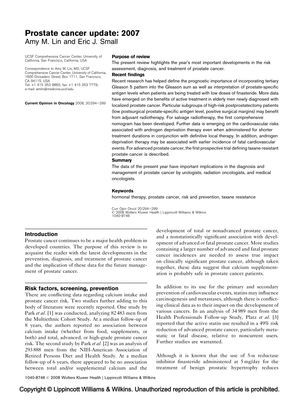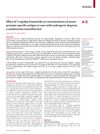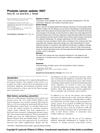Prostate Cancer Update: 2007
May 2008
in “
Current Opinion in Oncology
”

TLDR 2007 research improved understanding of prostate cancer risk, diagnosis, and treatment, but also showed the need for personalized treatment and further study on certain therapies' risks.
In 2007, significant advancements were made in prostate cancer research, with studies focusing on risk assessment, diagnosis, and treatment. Key findings included the use of prostate-specific antigen doubling time (PSA-DT) as a prognostic indicator for mortality after prostatectomy, with a PSA-DT of less than 3 months indicating the highest risk of death. A comprehensive nomogram for predicting progression-free probability after salvage radiotherapy was developed, and a retrospective study of 4,892 patients highlighted the cardiovascular risks associated with androgen deprivation therapy (ADT), including a higher incidence of cardiovascular death and potentially earlier fatal myocardial infarctions in men over 65. In hormone-refractory prostate cancer (HRPC), a study on atrasentan involving 809 men did not meet its primary endpoint, and while a phase II study on calcitriol and docetaxel showed improved survival, a subsequent phase III trial was terminated early due to increased deaths. Another study provided baseline data for second-line chemotherapy in an 82-patient cohort with docetaxel-refractory metastatic HRPC. These findings underscore the importance of tailoring treatments to individual patients and the need for further research on ADT's balance between disease-specific survival and all-cause mortality, as well as defining second-line treatments for taxane-resistant HRPC.


